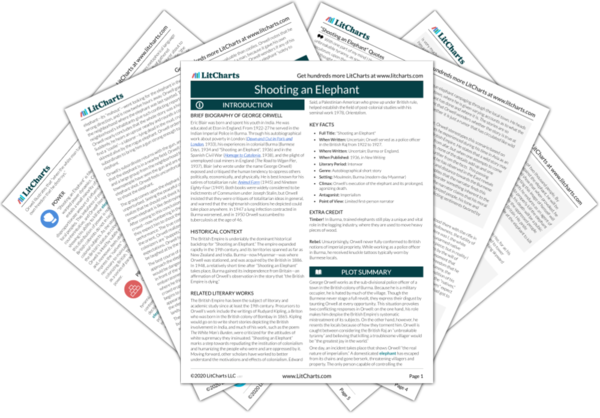Next
Summary
Shooting an Elephant Study Guide |
Next
Summary
|
Welcome to the LitCharts study guide on George Orwell's Shooting an Elephant. Created by the original team behind SparkNotes, LitCharts are the world's best literature guides.

Timber! In Burma, trained elephants still play a unique and vital role in the logging industry, where they are used to move heavy pieces of wood.
Rebel. Unsurprisingly, Orwell never fully conformed to British notions of imperial propriety. While working as a police officer in Burma, he received knuckle tattoos typically worn by Burmese locals.